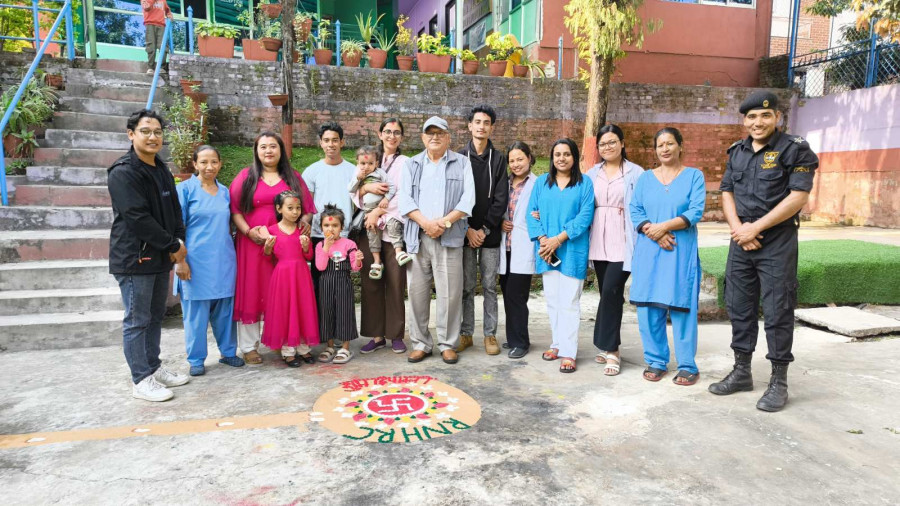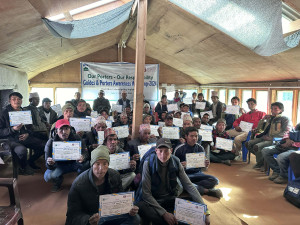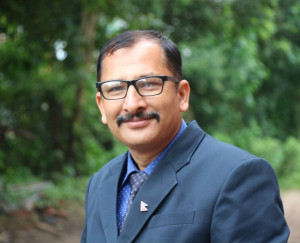Culture & Lifestyle
A quieter approach to mental health treatment
At Rhythm Neuropsychiatric Hospital, a small team of full-time specialists works to integrate psychiatry, psychology, and rehabilitation in a setting designed for steady care rather than rapid expansion.
Aarya Chand
In Aloknagar, Rhythm Neuropsychiatric Hospital and Research Centre is among a modest group of low-rise buildings, unlike many hospitals built as large blocks or tall complexes. The grounds feel almost domestic: open spaces, greenery visible from patient rooms, and a large courtyard where visitors and patients can walk or play badminton. The design aims for a calm, functional environment rather than formality or grandeur.
Inside, the layout is simple. The right wing holds the emergency room, the chairman’s office, and a hall used for group activities. In the central building, a male ward sits above outpatient clinics and the reception area. The left wing contains the female ward, and the top floor houses the laboratory. Most rooms have televisions, allowing patients to see outside on the open grounds. Safety is considered in small but deliberate ways—for example, avoiding curtains or cables that could be misused.
A distinctive feature is the hospital’s appointment card. Beyond scheduling details, it includes concise descriptions of different conditions, intended for patients and their families. This serves as a reference and helps doctors explain treatment approaches more effectively.
Chairman and CEO Shyam Pradhan recalls joining the hospital more than a decade ago, coming from an administrative rather than medical background. He had been involved in setting up several hospitals in Nepal. A friend whose son, along with other young doctors, wanted to establish a facility in the country rather than working abroad, approached him.
The initial site was in Ekantakuna, where the hospital began with limited knowledge but strong commitment from its founders, including Ritesh Thapa and other specialists. Over the years, revenue has been reinvested into services rather than distributed as dividends.
Twelve years later, the hospital relocated to Aloknagar, Minbhawan, in Kathmandu after the landlord reclaimed the original premises. Throughout, the team has prioritised service over expansion for profit.
According to Prabhakar Pokharel, consultant neuropsychiatrist and one of the hospital’s founding medical team members, Rhythm was established to integrate psychiatry, clinical psychology, addiction rehabilitation, and neurology under a single coordinated system. In the past, he explains, psychiatric care in Nepal often involved medication and diagnosis as the primary focus, with psychologists working separately and sometimes only visiting facilities occasionally. Rhythm’s model, by contrast, includes full-time psychiatrists and clinical psychologists—professionals who have completed MPhil-level training and at least two years of hospital-based experience.
As required, this structure allows the team to address patients’ needs through psychological therapy, medication, and inpatient or day care services. “The core policy from the beginning was to ensure these systems worked together,” Pokharel says.
Treatment at Rhythm follows evidence-based medicine, using internationally recognised classification systems for diagnosis. Whether a patient presents in Nepal, Japan, or the United States, the diagnosis for a given set of symptoms—such as insomnia, anger issues, hallucinations, or other disorders—should be the same. The hospital also offers advanced procedures like Repetitive Transcranial Magnetic Stimulation (RTMS) and Modified Electroconvulsive Therapy (MECT), available in only a few centres in the country.
The hospital has two full-time psychiatrists, 11 part-time psychiatrists, and two psychologists. Pokharel notes that their constant presence allows for ongoing case discussions and direct communication between disciplines, which he believes is uncommon in most local psychiatric facilities.

Pokharel acknowledges that one of the main challenges in psychiatric care is the length of treatment. A patient may need to take prescribed medication for six months or more, and the cumulative cost can make it difficult for them to continue. Rhythm addresses this by avoiding unnecessary tests and keeping equipment purchases minimal. Most diagnoses are made clinically, and specialised investigations are outsourced when needed, which reduces overheads.
He adds that the hospital does not aim for rapid expansion but instead works towards steady, long-term development, maintaining affordability while ensuring comprehensive services.
Beyond clinical services, Pokharel and his colleagues have been involved in outreach programmes. These include prison visits to address inmates’ mental health needs, stress management workshops, and awareness sessions. Before the Covid-19 pandemic, the hospital ran a free clinic on the last Saturday of each month, which they hope to reinstate.
He has also observed a change in public attitudes towards mental health. “These days, more young people are coming forward for help,” he says. “That was not the case a decade ago.’’
While Pokharel does not highlight individual recoveries as promotional narratives but notes that the hospital has treated individuals who arrived after months of unsuccessful treatment elsewhere, including abroad. Some had severe alcohol dependence or had experienced family breakdown; others were in crisis after suicide attempts. There are also cases of patients who came directly from the airport seeking care. The hospital also treats foreign nationals seeking care in Nepal.
He says, ‘‘For the team, each instance in which a person regains stability and can continue with their life is considered a success.’’
Reflecting on his early career in Nepal, Pokharel says he found that psychiatry was often under-resourced and undervalued in hospital management priorities. Requests for more psychiatrists, psychologists, or support staff were frequently declined, and services tended to operate at a basic level.
This, he explains, was one reason for establishing Rhythm: to create a model where psychiatric services could be well-staffed, integrated, and organised around patient needs rather than minimal provision.
The hospital operates with 25 inpatient beds and provides both outpatient and day care services. It was the first in Nepal to introduce RTMS, a non-invasive brain stimulation treatment for certain psychiatric conditions. MECT is another key service—modified to include anaesthesia for patient comfort, unlike the direct ECT still used in some centres.
Pokharel points out that while technology is important, patient care also depends heavily on doctor-patient ratios and the amount of time spent in consultations. These remain areas for ongoing improvement.
In the coming years, Pokharel hopes to focus on training more mental health professionals, improving treatment quality, and increasing individual consultation time. Reducing stigma and encouraging early help-seeking behaviour are also key goals.
He notes that while Nepal’s health budget is small, the portion dedicated to mental health is even smaller. Government policy now includes mandates from the Supreme Court related to mental health care, and he believes fully implementing these could bring meaningful progress.
From the start, Rhythm has aimed to show that psychiatric care in Nepal can be comprehensive, integrated, and staffed with specialists working full time on-site. The hospital was not conceived as a commercial venture but as an attempt to address gaps in existing services—particularly the absence of multi-professional teams and reluctance to invest in mental health facilities.
Over more than a decade, Rhythm has focused on consistent, collaborative care, reinvesting in its facilities and workforce rather than rapid expansion. In a sector often constrained by stigma, limited resources, and fragmented services, it has sought to demonstrate an alternative way of organising psychiatric treatment in Nepal.




 9.12°C Kathmandu
9.12°C Kathmandu




.jpg&w=200&height=120)










